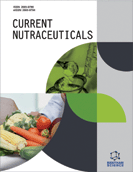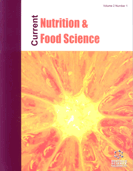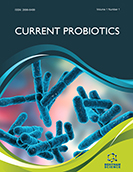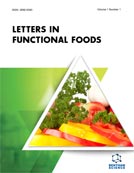Abstract
Background: Plants are a vital source of natural drugs as the traditional use of plants as therapeutic agents for a variety of ailments has been traced back thousands of years. The utilization of Heliotropium calcareum has been evident since ancient times for treating various disease states like inflammation associated with gout and rheumatism, poisonous bites, and other skin disorders. The current research work was carried out to determine the phytochemistry and biological activities of the crude methanolic extract obtained through maceration from the aerial parts of Heliotropium calcareum.
Methods: The plant was collected from district Bhakkar, Punjab, Pakistan. Maximum phenolic (74.5 μg GAE/mg) and flavonoid contents (58.99 μg QE/mg) were observed in ethyl acetate fraction. Significant antioxidant potential was observed in ethyl acetate fraction with the highest free radical hunting activity of 92.6 ± 6.7 μM.
Results: Cytotoxicity assay using MTT dye was performed where non-polar (n-hexane) and polar (ethyl acetate) fractions displayed excellent cytotoxicity against HeLa cells (IC50 = 79.95 ± 3.718 & 164 ± 4 μg/mL, respectively). Furthermore, the above fractions showed momentous results in cell cycle analysis and promising proapoptotic effect against cervical (HeLa) cancer cell lines. An nhexane and ethyl acetate fraction were selected for cell cycle analysis to determine the quantitative measurement of the degree of apoptosis. According to the results given below in the figure, the cervical (HeLa) cancer cells were treated with n-hexane and ethyl acetate fractions at various concentrations. An increase in the cell population at G0/G1 phase and a decrease in the S-phase population concerning untreated cells suggested the G0/G1 phase arrest in n-hexane and ethyl acetate fractions treated HeLa cells.
Conclusion: Taken together, n-hexane and ethyl acetate fractions were found to be the most promising and active elements of H. calcareum and may be utilized to explore their cytotoxic effects further in the animal model.
Keywords: Heliotropium calcareum, breast cancer, cervical cancer, flow cytometry, non-polar extracts, Reactive Oxygen Species (ROS).
Graphical Abstract
Current Nutraceuticals
Title:Exploring Cytotoxic and Atioxidant Properties of Heliotropium calcareum in Polar and Non-Polar Extracts
Volume: 2
Author(s): Muhammad Uzair, Faisal Rashid, Hamid Saeed Shah and Jamshed Iqbal*
Affiliation:
- Centre for Advanced Drug Research, COMSATS University Islamabad, Abbottabad Campus, Abbottabad-22060,Pakistan
Keywords: Heliotropium calcareum, breast cancer, cervical cancer, flow cytometry, non-polar extracts, Reactive Oxygen Species (ROS).
Abstract:
Background: Plants are a vital source of natural drugs as the traditional use of plants as therapeutic agents for a variety of ailments has been traced back thousands of years. The utilization of Heliotropium calcareum has been evident since ancient times for treating various disease states like inflammation associated with gout and rheumatism, poisonous bites, and other skin disorders. The current research work was carried out to determine the phytochemistry and biological activities of the crude methanolic extract obtained through maceration from the aerial parts of Heliotropium calcareum.
Methods: The plant was collected from district Bhakkar, Punjab, Pakistan. Maximum phenolic (74.5 μg GAE/mg) and flavonoid contents (58.99 μg QE/mg) were observed in ethyl acetate fraction. Significant antioxidant potential was observed in ethyl acetate fraction with the highest free radical hunting activity of 92.6 ± 6.7 μM.
Results: Cytotoxicity assay using MTT dye was performed where non-polar (n-hexane) and polar (ethyl acetate) fractions displayed excellent cytotoxicity against HeLa cells (IC50 = 79.95 ± 3.718 & 164 ± 4 μg/mL, respectively). Furthermore, the above fractions showed momentous results in cell cycle analysis and promising proapoptotic effect against cervical (HeLa) cancer cell lines. An nhexane and ethyl acetate fraction were selected for cell cycle analysis to determine the quantitative measurement of the degree of apoptosis. According to the results given below in the figure, the cervical (HeLa) cancer cells were treated with n-hexane and ethyl acetate fractions at various concentrations. An increase in the cell population at G0/G1 phase and a decrease in the S-phase population concerning untreated cells suggested the G0/G1 phase arrest in n-hexane and ethyl acetate fractions treated HeLa cells.
Conclusion: Taken together, n-hexane and ethyl acetate fractions were found to be the most promising and active elements of H. calcareum and may be utilized to explore their cytotoxic effects further in the animal model.
Export Options
About this article
Cite this article as:
Uzair Muhammad, Rashid Faisal , Shah Saeed Hamid and Iqbal Jamshed *, Exploring Cytotoxic and Atioxidant Properties of Heliotropium calcareum in Polar and Non-Polar Extracts, Current Nutraceuticals 2021; 2 (3) . https://dx.doi.org/10.2174/2665978602666210505104356
| DOI https://dx.doi.org/10.2174/2665978602666210505104356 |
Print ISSN 2665-9786 |
| Publisher Name Bentham Science Publisher |
Online ISSN 2665-9794 |
 5
5
- Author Guidelines
- Bentham Author Support Services (BASS)
- Graphical Abstracts
- Fabricating and Stating False Information
- Research Misconduct
- Post Publication Discussions and Corrections
- Publishing Ethics and Rectitude
- Increase Visibility of Your Article
- Archiving Policies
- Peer Review Workflow
- Order Your Article Before Print
- Promote Your Article
- Manuscript Transfer Facility
- Editorial Policies
- Allegations from Whistleblowers
- Announcements
Related Articles
-
Nutritional Aspects Relating to the Developmental Origins of Health and Disease
Current Women`s Health Reviews The Nervous System as a Critical Regulator of Immune Responses Underlying Allergy
Current Pharmaceutical Design Pharmacological Activities and Therapeutic Potential of Kaempferitrin in Medicine for the Treatment of Human Disorders: A Review of Medicinal Importance and Health Benefits
Cardiovascular & Hematological Disorders-Drug Targets Alcohol and Smoking Mediated Oxidative Stress in Organ Toxicities: Role of Cytochrome P450 Systems
Mini-Reviews in Organic Chemistry Relationship of High-Sensitivity C-Reactive Protein Concentrations and Systolic Heart Failure
Current Vascular Pharmacology A Direct Interaction Between Mitochondrial Proteins and Amyloid-β Peptide and its Significance for the Progression and Treatment of Alzheimer’s Disease
Current Medicinal Chemistry Type 2 Diabetes Mellitus and Alzheimer’s Disease: Bridging the Pathophysiology and Management
Current Pharmaceutical Design Polyethylenimine In Medicinal Chemistry
Current Medicinal Chemistry Recent Advances in Fe-MOF Compositions for Biomedical Applications
Current Medicinal Chemistry Perioperative Management of Intracranial Aneurysm and Subarachnoid Hemorrhage
Current Pharmaceutical Design Recent Patents on Emerging Therapeutics for the Treatment of Glaucoma, Age Related Macular Degeneration and Uveitis
Recent Patents on Biomedical Engineering (Discontinued) Treatment of Acute Leukaemias with Monoclonal Antibodies: Current Status and Future Prospects
Cardiovascular & Hematological Agents in Medicinal Chemistry Differences in Lopinavir Plasma Concentrations Comparing Kaletra® Film Coated Tablets and Soft Gelatine Capsules That Result in Various Lipid Abnormalities
Drug Metabolism Letters Organosulphur Compounds Induce Apoptosis and Cell Cycle Arrest in Cervical Cancer Cells via Downregulation of HPV E6 and E7 Oncogenes
Anti-Cancer Agents in Medicinal Chemistry Misfolding of Apoprotein B-100, LDL Aggregation and 17-β -estradiol in Atherogenesis
Current Medicinal Chemistry Resurgence of Herbal Antihypertensives in Management of Hypertension
Current Hypertension Reviews Subject Index To Volume 13
Current Medicinal Chemistry Advances in Patents Related to Intrapocket Technology for the Management of Periodontitis
Recent Patents on Drug Delivery & Formulation Chelating Agents for the Treatment of Systemic Iron Overload
Current Medicinal Chemistry Medial Vascular Calcification in Diabetes Mellitus and Chronic Kidney Disease: The Role of Inflammation
Cardiovascular & Hematological Disorders-Drug Targets






















